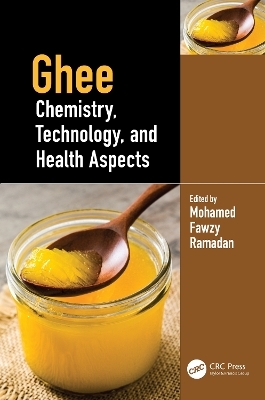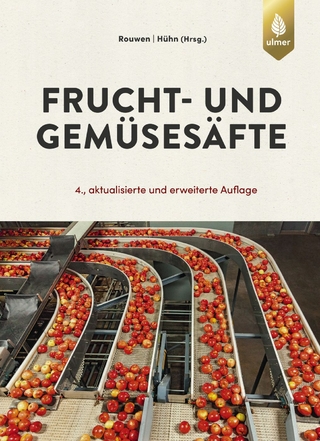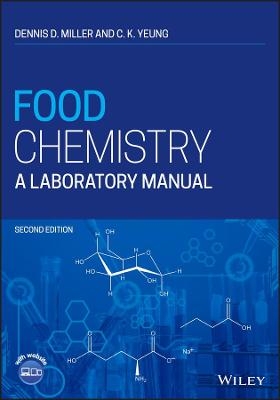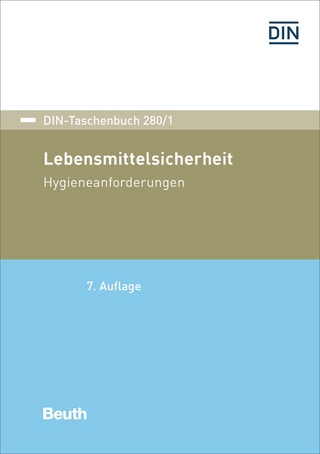
Ghee
CRC Press (Verlag)
978-1-032-11913-7 (ISBN)
Ghee (clarified milk fat) is a dairy product composed mainly of milk fat and minor components, such as vitamins, minerals, and enzymes; and butter oil has a bland flavor, whereas ghee has a pleasing flavor. In 18 chapters, Ghee: Chemistry, Technology, and Health Aspects covers topics focusing on ghee chemistry and physicochemical properties, and ghee processing and applications, as well as ghee biosafety and health effects.
Features:
Explores the chemistry of ghee from different dairy sources
Discusses ghee functional constituents and their health-enhancing potential
Written by industry experts and international scientists
Addresses ghee-growing applications in clinical nutrition, functional foods, pharmaceuticals, nutraceuticals, and cosmetics
Authored by a team of experts, this book brings a diversity of lipid science developments to chemists, nutritionists, and researchers in the fields of food science, nutrition, food chemistry and technology, cosmetics, and nutraceuticals. This book is an essential textbook for healthy food developers as well as the research and development (R&D) researchers using milk fats. Meanwhile, it is a valuable reference work for edible fat and oil companies reformulating their products or developing new healthy products.
Mohamed Fawzy Ramadan is a Food Chemistry and Biochemistry Professor at the Department of Clinical Nutrition, Faculty of Applied Medical Science, Umm Al-Qura University, Makkah, Saudi Arabia. Prof. Mohamed Fawzy Ramadan obtained his Ph.D. (Dr. rer. nat.) in Food Chemistry from the Berlin University of Technology (Germany, 2004). Prof. Mohamed Fawzy Ramadan continued his post-doctoral research at ranked universities such as University of Helsinki (Finland), Max-Rubner Institute (Germany), Berlin University of Technology (Germany), and the University of Maryland (USA). In 2012, he was appointed as Visiting Professor (100% teaching) in the School of Biomedicine, Far Eastern Federal University in Vladivostok, Russian Federation. Prof. Mohamed Fawzy Ramadan published more than 300 research papers and reviews in international peer-reviewed journals. He also edited and published several books and book chapters (Scopus h-index is 45 and more than 7000 citations). He was an invited speaker at several international conferences. Since 2003, Prof. Mohamed Fawzy Ramadan is a reviewer and editor in several highly cited international journals, such as the Journal of Medicinal Food, eFood, Journal of Umm Al-Qura University for Applied Sciences, and Journal of Advanced Research. He is the editor-in-chief of Journal of Umm Al-Qura University for Medical Science (JUMS). Prof. Mohamed Fawzy Ramadan received several prizes, including Abdul Hamid Shoman Prize for Arab Researcher in Agricultural Sciences (2006), the Egyptian State Prize for Encouragement in Agricultural Sciences (2009), European Young Lipid Scientist Award (2009), AU-TWAS Young Scientist National Awards (Egypt) in Basic Sciences, Technology and Innovation (2012), TWAS-ARO Young Arab Scientist (YAS) Prize in Scientific and Technological Achievement (2013), and Atta-ur-Rahman Prize in Chemistry (2014).
Section 1. General Aspects. 1. Introduction to ghee Chemistry, technology, and health effects. 2. Standards and labelling of ghee and ghee-derived products. Section 2. Ghee: Physicochemical properties and health aspects. 3. Cow ghee: chemistry, technology, and functional properties. 4. Nutritional and Productive Aspects of Ghee: Effect of including Tithonia diversifolia Flour in the Concentrates of Lactating Cows. 5. Buffalo ghee: chemistry, technology, and functional properties. 6. Camel ghee: chemistry, technology, and functional properties. 7. Camel Ghee: Nutritional Value and Health Aspects. 8. Sheep Ghee: Chemistry, Technology and Functional Properties. 9. Ghee: fatty acids, triacylglycerols, and phospholipids. 10. Acrylamide, trans-fatty acids, and cholesterol oxides in ghee. 11. Ghee aroma compounds and Maillard reaction products. 12. Ghee: Chemistry and physicochemical properties. 13. Ghee microemulsion: chemistry and properties. Section 3: Ghee: Processing and applications. 14. Ghee manufacturing and processing. 15. Quality markers of ghee during storage: oxidative stability, microbial and sensory properties. 16. Novel Ghee Adulteration Detection Methods. 17. Preparation and properties of low-cholesterol ghee. 18. Chemistry and safety of ghee residue.
| Erscheinungsdatum | 04.10.2023 |
|---|---|
| Zusatzinfo | 64 Tables, black and white; 23 Line drawings, color; 9 Line drawings, black and white; 18 Halftones, color; 41 Illustrations, color; 9 Illustrations, black and white |
| Verlagsort | London |
| Sprache | englisch |
| Maße | 156 x 234 mm |
| Gewicht | 453 g |
| Themenwelt | Technik ► Lebensmitteltechnologie |
| ISBN-10 | 1-032-11913-6 / 1032119136 |
| ISBN-13 | 978-1-032-11913-7 / 9781032119137 |
| Zustand | Neuware |
| Haben Sie eine Frage zum Produkt? |
aus dem Bereich


